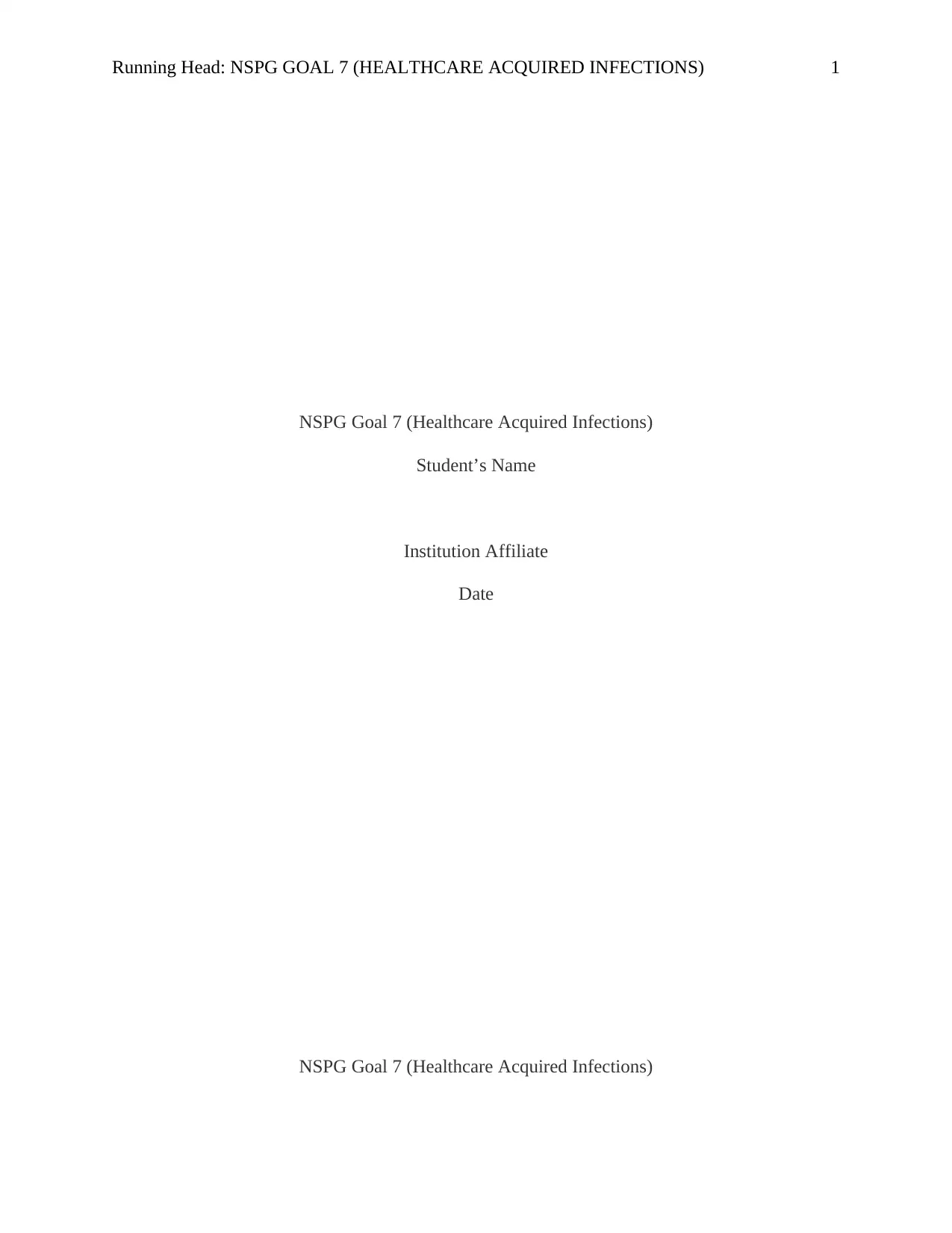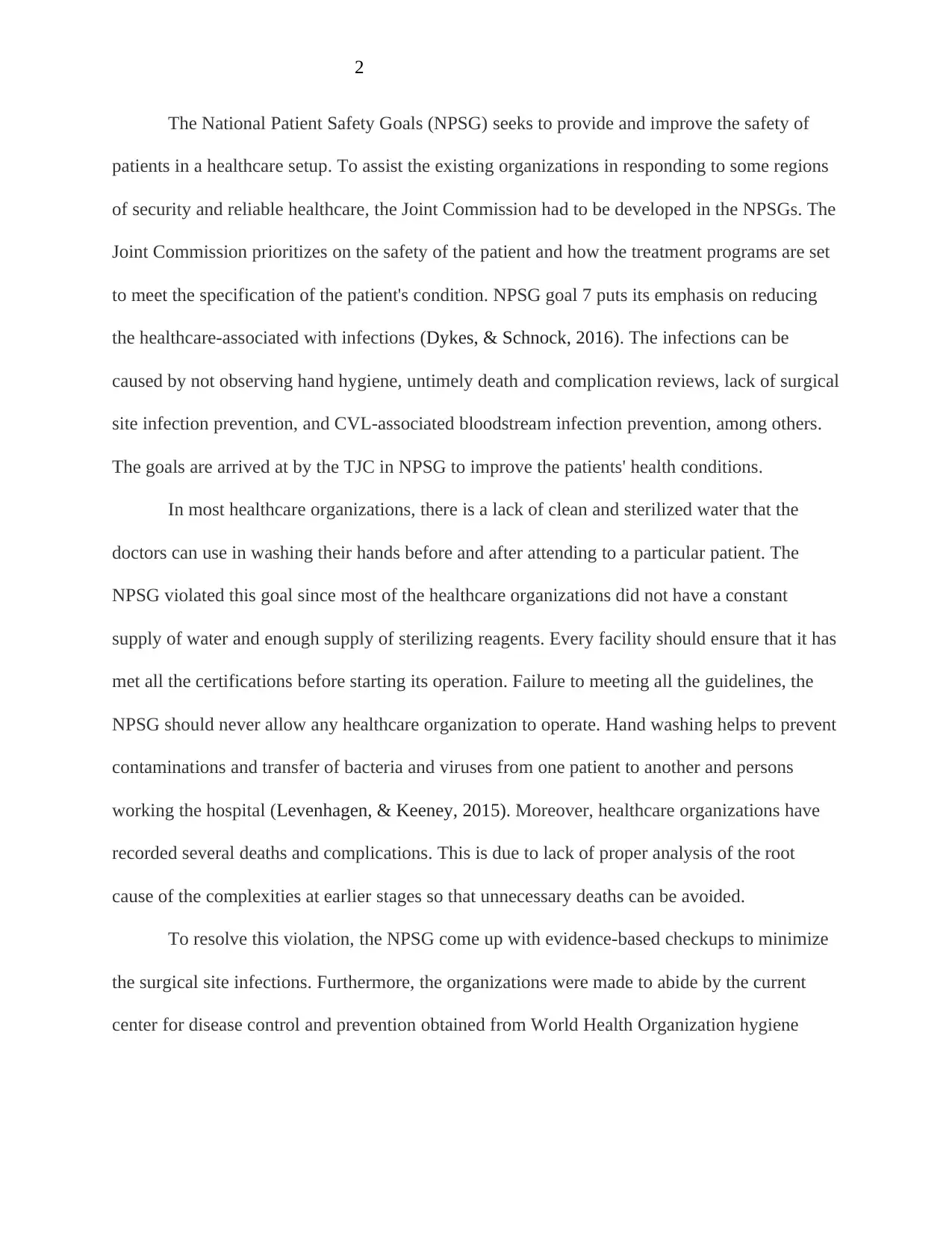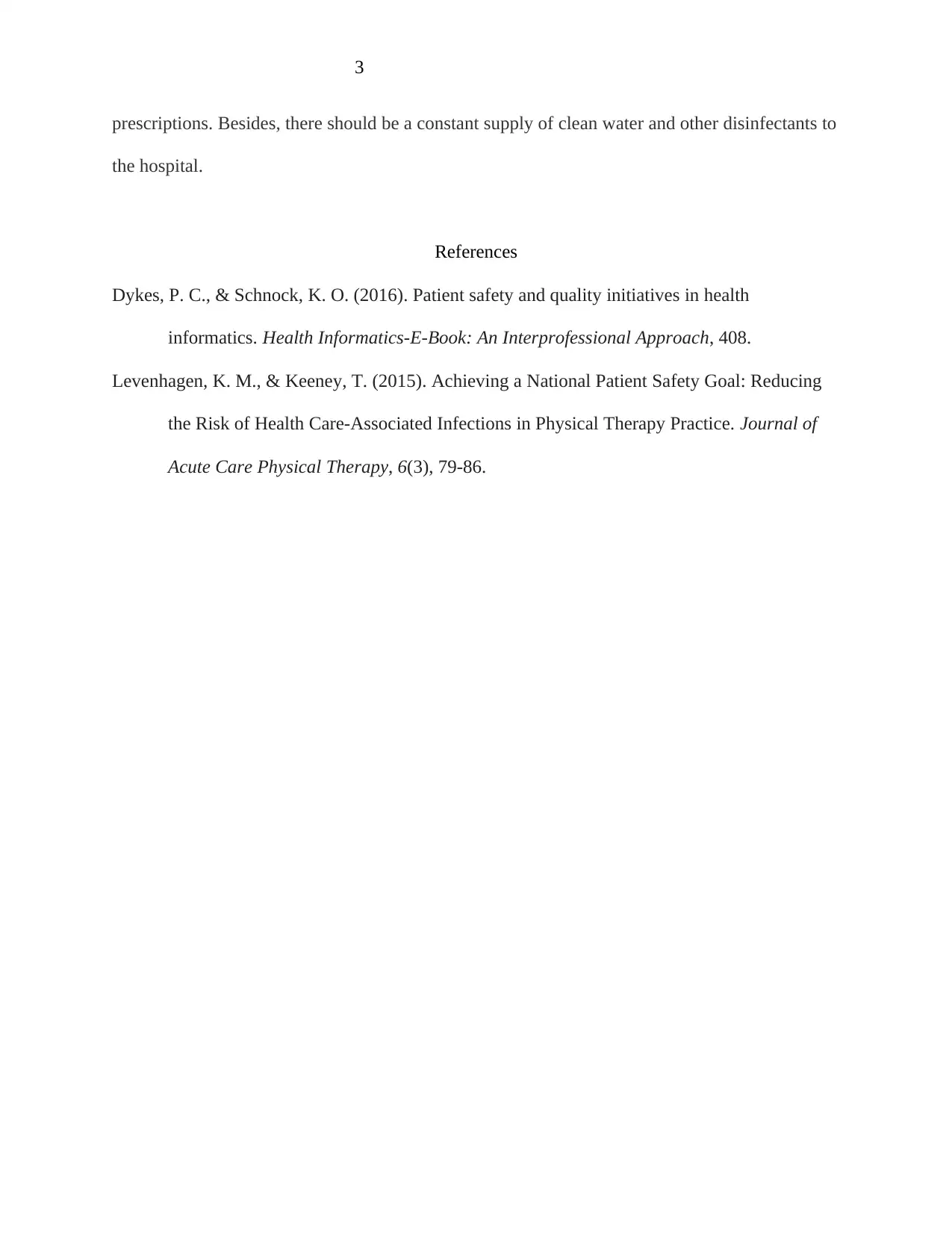Analysis of NPSG Goal 7: Healthcare Acquired Infections in Healthcare
VerifiedAdded on 2022/12/23
|3
|487
|97
Report
AI Summary
This report examines National Patient Safety Goal 7 (NPSG), emphasizing the reduction of healthcare-associated infections (HAIs). It discusses the role of the Joint Commission in setting these goals to improve patient safety within healthcare settings. The report highlights key issues such as the lack of proper hand hygiene, insufficient review of complications, and inadequate prevention of surgical site and bloodstream infections. It underscores the importance of clean water and sterilization, citing violations of NPSG guidelines due to deficiencies in these areas. The report suggests evidence-based checkups, adherence to CDC and WHO hygiene prescriptions, and the maintenance of clean water supplies as crucial measures to address these violations and improve patient outcomes. The report also analyzes the impact of these issues and provides recommendations for improvement.
1 out of 3










![[object Object]](/_next/static/media/star-bottom.7253800d.svg)